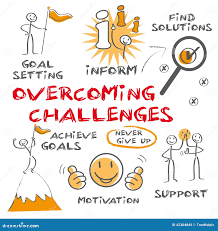Mastering Conflict Resolution: Overcoming Challenges and Training Employees

Introduction:
Conflict resolution is a vital process in any workplace. However, it can be fraught with challenges. This article addresses common hurdles in conflict resolution such as resistance to recommending solutions, personal biases, and difficulties in finding common ground. It emphasizes the importance of addressing these issues and highlights the role of employee training in effective conflict resolution.

Section 1: Resistance to Recommend Solutions
Resistance to recommending solutions can hinder productive conflict resolution. Employees may fear judgment or backlash from peers and superiors, leading to unresolved conflicts. Creating a safe space for open communication and offering conflict resolution training encourages employees to share their thoughts and fosters trust and respect.
Section 2: Identifying and Eliminating Biases
Biases, including those related to age, gender, race, sexual orientation, and religion, can give rise to workplace conflicts. Self-reflection, open communication, and listening to others help identify and correct these biases. Fostering a culture of diversity and inclusion promotes fairness and respect.
Section 3: Finding Common Ground
Finding common ground among conflicting parties is a central goal in conflict resolution. This requires acknowledging each party’s interests, needs, and concerns through active listening and open communication. Embracing alternative solutions and remaining open-minded ensures the creation of a collaborative environment.
Section 4: Training Employees in Conflict Resolution

Employee training plays a critical role in successful conflict resolution. Training equips employees with the skills to recognize early signs of conflicts, handle disputes professionally, and contribute to a harmonious work culture. Engaging and interactive training programs ensure that employees retain the knowledge and tools necessary for conflict resolution.
Section 5: Benefits of Employee Training
Employee training leads to a positive work culture, where employees can handle difficult situations, promote open communication, and collaborate effectively. It improves job performance, reduces stress, and enhances job satisfaction. Conflict resolution training is a valuable investment in an organization’s long-term success.
Section 6: Tips for Employee Training
Effective employee training begins with educating employees about the significance of conflict resolution. Providing practical tools, offering opportunities for practical application, and reinforcing training over time are key to ensuring the success of conflict resolution training.
Conclusion:
Conflict resolution is an essential skill in the workplace. By addressing challenges, promoting open communication, and investing in employee training, organizations can foster a collaborative and productive work culture. While managing conflicts may not always be easy, it leads to a harmonious workplace that supports personal growth and business success. Conflict resolution is not just a skill; it’s a cornerstone of a positive workplace environment.









